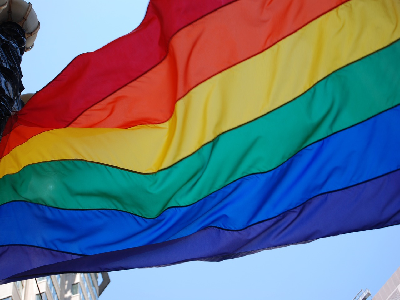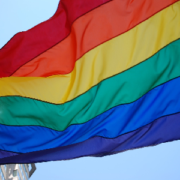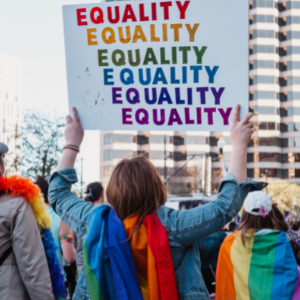LGBTQ Update: Building A Rainbow Pipeline

By Aimee Hansen
In this month of a historic milestone towards LGBTQ rights in Congress, supported by an unprecedented number of business allies, theglasshammer explores the increasing business case for – and arguable inevitability of – greater LGBTQ executive leadership in the C-Suite.
Status: real progress amidst real discrimination.
According to Catalyst’s 2018 Quick Take, “72 countries prohibit discrimination in employment because of sexual orientation.” The U.S. has no federal protection for LGBT, no state-level protection for sexual orientation in 28 states and no gender identity protection in 30 states. 50% of the LGBTQ community lives in the 30 states that do not offer clear protection.
Policy wise at a corporate level, 91% of Fortune 500 companies have non-discrimination policies that include sexual orientation. 83% include gender identity, 60% include domestic partner benefits and 58% include transgender-inclusive benefits. Interestingly as a comparable, only 21% of Fortune 500 firms offer paid family leave which is a very crucial topic that needs to be addressed regardless of who the primary caregiver is.
About a fifth of LGTBQ employees still experience discrimination when applying for jobs and have not been paid or promoted equally.
A recent study revealed that people who sounded ‘gay or lesbian’ (or gender a-typical) were less likely to be considered suitable for leadership positions, and were related to differently by heterosexual listeners.
Another study sent two virtually identical resumes to Fortune 100 companies that had both non-discrimination policies and LGBT ERGs, the only real difference in resumes being that one of the candidates indicated being president of a gay student alliance and the other president of a non-LGBT social club. The first resume was 40% less likely to get an interview.
According to Forbes and Todd Sears of Out Leadership, in 2019, “609 companies got a 100 on the Human Rights Campaign Corporate Equality Index, yet ‘46% of LGBT employees in the US are still in the closet.’”
Outlook: a rainbow pipeline for LGBTQ leadership.
“Less than 0.5% of Fortune 500 CEOs are LGBT,” says Sears in Forbes. Yet he argues that while current C-Suite representation is underwhelming, it’s also on the cusp of a greater LGTBQ influx.
“If you look at the average age and tenure of CEOs in the Fortune 500, it’s in the mid to late-50s and their tenure is significant with a turnover of less than 2%,”says Sears. “So, if you’re looking for where the LGBT leaders are, there are a significant number of LGBT leaders one-level below the C-Suite.”
Sears emphasizes focusing on this level, at regional CEOs in Fortune 500 companies and at the higher number of “out” CEOs in mid-cap companies. These leaders are in the pipeline to take executive leadership, such as Beth Ford, the new CEO of Land O’Lakes, and the first openly gay woman CEO to run a Fortune 500 company.
In other words, it would appear there’s a rainbow pipeline on its way to displace the current ‘rainbow ceiling’.
Stanford’s LGBTQ Executive Leadership Program, now in its fourth year, has a a high profile for preparing executive bound LGBTQ senior professionals, with training including leading as your “genuine self” in “authentic leadership”. According to FT, the program has “spawned one of the school’s most active alumni networking groups.”
OutNEXT is also the first global talent development program for emerging LGBT in the US, Europe, Asia and Australia. 1,100 young leaders have gone through this program in the last five years.
As part of the curriculum, Sears talks about helping emerging LGBT executives to comprehend their “gay vantage.” According to an Out study, 70% of tomorrow’s LGBT leaders see being gay as a positive influence on their careers (vs. less than 20% five years ago). Research has shown that LGBT people have a higher level of empathy, for example, an important quality in emotional intelligence and leadership.
Fact: businesses with LGBTQ representation in leadership perform better.
The business benefits of LGTBQ leadership are becoming increasingly clear, and Sear speaks to elevating the salience of “Return on Equality”, an economic benefit which “drives sustainable, bottom line growth.”
In a recent study by Marquette University, researchers looked at 88 companies that were members of the Wisconsin LGBTQ Chamber of Commerce, of which 61% had one or more LGBT people in a top position.
The study found that businesses with LGBT senior leadership had higher overall “firm performance”, as well as noticeably higher scores in corporate social and environmental responsibility, high performance HR practices and workforce quality.
“This study supports what we have been saying for years: Having LGBT people in leadership positions, whether it’s as a CEO, a business owner, a part of senior management or on the board of directors, is good for a business’ bottom line,” said Jason Rae of the Wisconsin LGBT Chamber of Commerce. “Simply put, diversity is good for business.”










